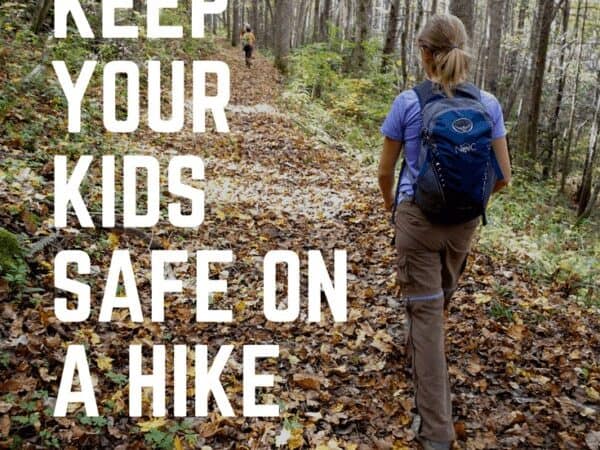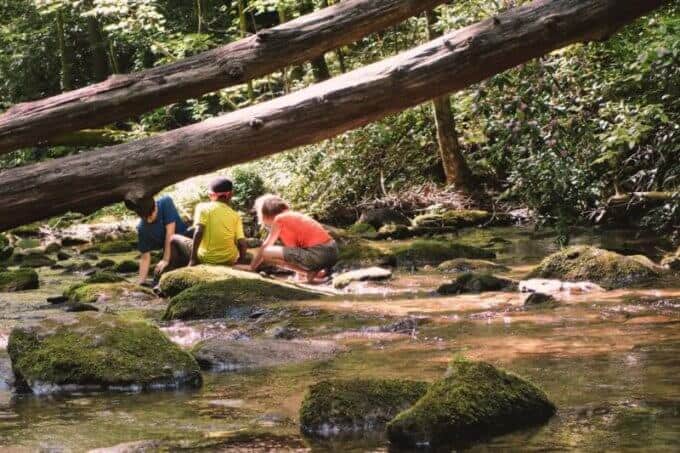“Has anyone seen Paige?” I asked our family friends who were backpacking with us and setting up camp nearby. They had not seen her come back either. The instinctual mother fear of something tragic happening to my child gripped me like a vice. A few minutes later I found her nearby, happily playing with some of the kids in our group. She had told Larry where she was headed before she joined them, and he was not in camp to allay my fears as this unfolded.
This story is hardly a story, since it ended well and without incident. It happens though, even with adults, losing your sense of direction with something as simple as stepping off the trail a short distance to take a pee break. As any parent knows, we can’t hover over our children with every step. The woods are no exception.
As a search and rescue team member, my team has certainly gone looking for lost kids in the woods and it’s always an emotionally challenged endeavor, and there are usually lessons to be learned from the event. Because I’m also a mom to three kids of my own, I take this topic very seriously and this article is a collection of my own thoughts and recommendations, based on things I’ve learned from my team’s searches.
What to Do Before Leaving on a Hike With Your Kids
As our children’s guardians in the backcountry, it’s our responsibility to outfit them with the knowledge and tools they need for a safe and enjoyable experience. Just like at home where we create a safety plan in case of things like a house fire, children must also be counseled about certain unlikely, but potentially dangerous, scenarios before leaving on a hike.
Establish ground rules for your family. If your kids are young, make sure they understand that they need to remain within your sight at all times. For older children, use your discretion based on their skills and experience, but always establish certain parameters (for instance, I recommend counseling teens to always wait at a trail junction before proceeding further or to stop and wait at any place along the trail that is confusing ).
Engage your kids in the planning process for a hike: Show them the route you’ll take so they have a mental picture of where they’re headed. If you’ll pass certain significant landmarks, such as a waterfall, point those out on the map as well. For older kids, I love teaching them dead reckoning techniques and basic navigation skills.
Counsel your children on safety topics. Remind them what to do if you encounter wildlife or if you’re caught in a thunderstorm. If you’re not sure what to do in these situations yourself, it’s the perfect time to learn as a family. Be careful with your phrasing during these conversations. Our society is often geared towards kids thinking our wild spaces are dangerous and hostile places, and we don’t want to promote this fear-based culture of wild places. Instead, try to have fun with it: Do some role playing and make it a game of sorts, to keep the topics more lighthearted and prevent your child from becoming fearful.
Dress your children in brightly colored clothing. If lost, a child is going to stand out more if they’re wearing something highly visible to search and rescue teams.
Make sure someone is “it” and the primary person to remain accountable for the whereabouts of young children. It’s easy to become lost in your own thoughts for a few moments while hiking, even with children in tow. A few seconds of distraction can mean losing track of a young child. Take turns with the other adults in your hiking group to remain actively alert as to the whereabouts of younger children at all times. Pass a verbal baton when handing off the duty of being “it” to someone else. The added bonus is that everyone gets a little down time to soak in their surroundings.
Review what your kids should do if they get separated from you (more on that below).
What Kids Should Carry on a Hike
Mother Nature has built a magnificent classroom, and it simply lies in wait with its wonders and lessons for both kids and adults. Nature’s classroom, however, requires a different set of school supplies for your child’s backpack.
I’ve developed a packing system for my kids’ personal safety. Whether we are going on a day hike or a multi-day backpacking trip, I recommend that appropriately-aged kids have two specific collections of items:
- In pocket on their body and outside of their backpack
- In their backpack
What Kids Should Carry Outside Their Backpack
The reason I have them keep the following items outside of their pack and on their body elsewhere probably makes sense if you think of the story above. Paige had taken off her backpack before she headed off, but she would have at least stood a chance of being found easily with these items, especially the whistle. I personally carry these same items on my own body in a small zipped pouch in my pocket, and not in my pack, for the same reason.
1. Whistle
2. Lighter or Waterproof Matches
5. Identification Bracelet like Road ID (optional)
Of course, my kids are ages that I can trust them with the items on this particular list Would I trust a 6-year-old the same list? Probably not. For each kid, the age and what they are allowed to carry will differ, based on their maturity and backcountry experience. A whistle, however, should be always be on a child’s body somewhere during a hike (and my apologies in advance for the problems this will create with the younger crowd, who will be in disbelief that a parent is actually mandating that they carry a whistle at all times!)
What Kids Should Carry in Their Backpack
What about the “10 essential systems,” some of you might be wondering? Don’t they need to carry those, just like an adult does on a hike? If you have no idea what the 10 essentials are, please, before you do anything else, read this post.
I absolutely consider the essentials we should all carry, but I pare it down a bit for their needs and skill level. Specifically, my kids carry the following in their packs, regardless of the distance of our hike:
- Rain Jacket
- Warm Jacket
- Extra Socks
- Emergency Bivy or Trash Compactor Bag
- Headlamp or flashlight
- Water
- Extra Food
- A couple of band aids
- Small “Lovey” for comfort (remember “Wilson” from the movie Cast Away? Need I say more?)
- Note with reminders of what they should do if they become separated (more on this below)
- Options for colder temperatures: Gloves, Hat, Hand/Foot Warmers
What to include in a note your child carries in his/her backpack
If a child is separated from you, undoubtedly they are going to be scared and potentially forget what you’ve counseled them about at home. For that reason, I think it’s a great idea to stick a note in your child’s backpack, tailoring it to their reading level, depending on their ages. Let your kids know the note is in their backpack and go over these points before you leave home, so you can answer any questions they might have and to proactively educate them on this topic.
Here are some ideas for what to include in that note you stick in your child’s backpack:
1. Stay where they are and don’t wander further, unless they are in immediate environmental danger.
2. Stay calm and remember that help is on the way as quickly as possible. Teaching the acronym STOP, which stands for Stop, Think, Oserve, and Plan is a good practice too.
3. Exercise in place if they are cold (jumping jacks, running in place, etc).
4. Stay as dry as possible. That’s where the rain jacket and bivy/trash compactor bag can help. A trash compactor bag could also be stuffed full of dry leaves to help insulate the space.
5. Blow their whistle in 3 short bursts every few minutes.
6. Notes on how to start a fire (if they have the equipment to start one, based on what you packed for them)
7. If they have a phone, keep it in airplane mode but see if they have a signal to call 911 or text someone their coordinates (read this post to learn how to teach them to do this).
8. Remind them that “stranger danger” rules should be largely forgotten if they become separated from you on a hike, especially if they hear someone calling their name as it’s likely a search and rescue team member. Also, remind them that they are not in trouble for getting lost and they should not try to hide. If they see another hiker on the trail, they should make their presence known versus trying to remain unseen.
9. Remind them that wildlife is typically just as scared as them as they are of the wildlife. Do not run from wildlife if they should see any, nearby but make lots noise to try and scare it off, should it try to approach them.
I think it’s also important to include your own voice in the wording of this note, reminding them that you are undoubtedly doing everything in your power to find them quickly and that you love them.
These lists are certainly not limited. Chime in below in the comments section if you have your own kids carry something you don’t see here or if you have suggestions. Also, I’m happy to send you a printable checklist of the items kids should carry and reminders of what your note should include in their backpack (see below). Now go forth and have fun in the woods, but be safe!
[content-upgrade id=”3475″]

If you found this information valuable, please help me share the love on Pinterest by pinning it!
